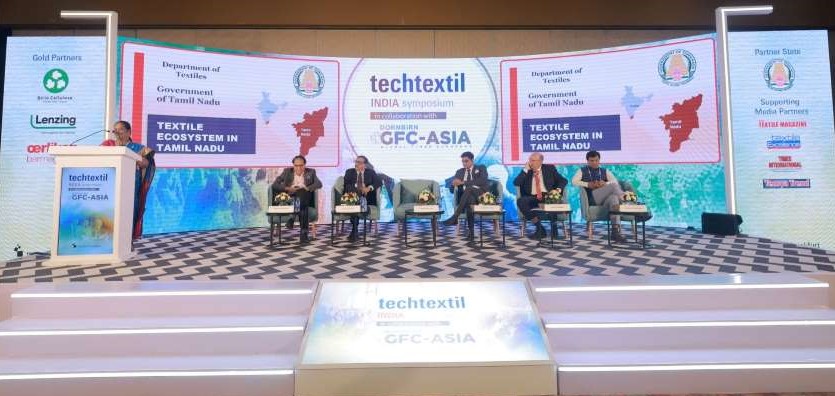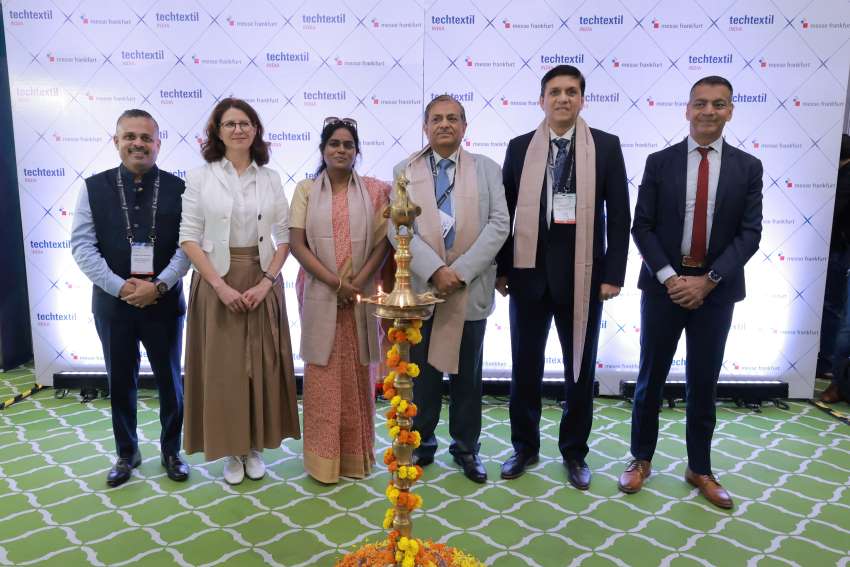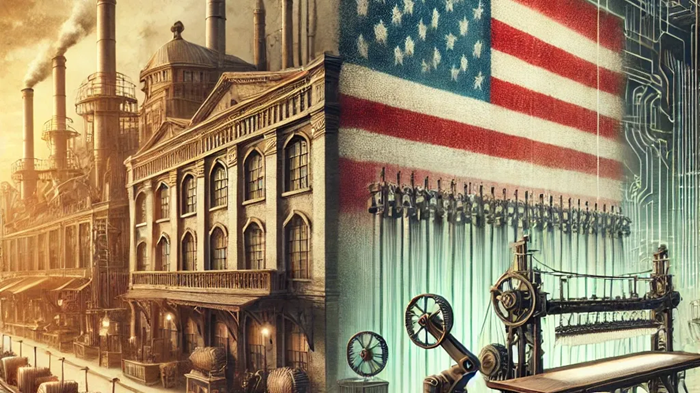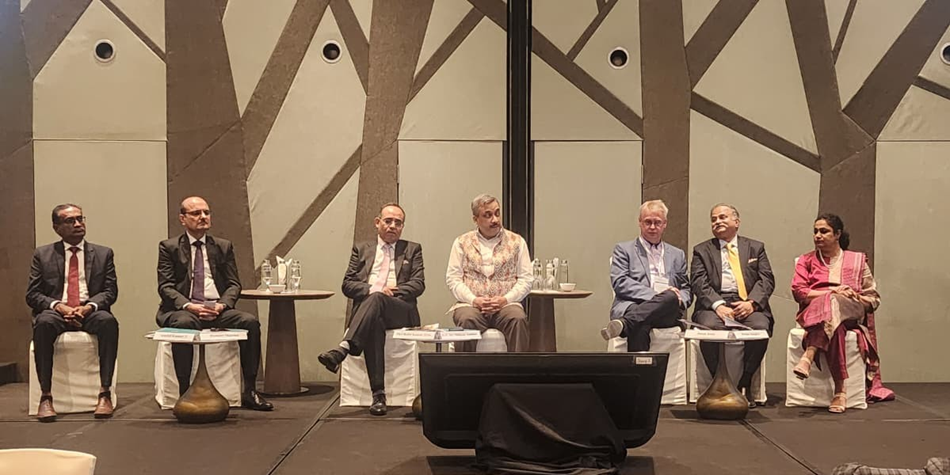FW
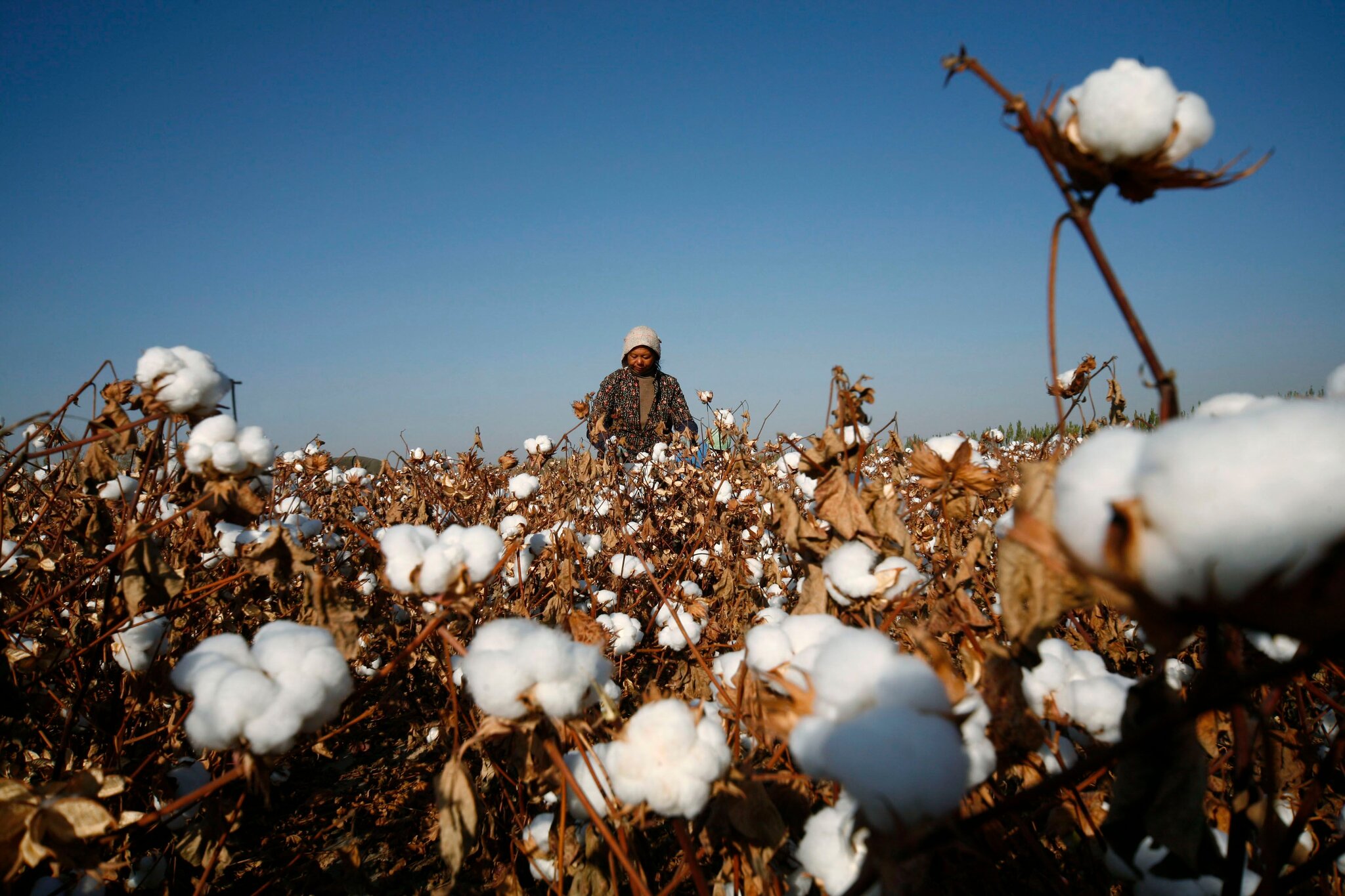
When Presidents Donald Trump and Xi Jinping announced a fragile peace in Busan last week, most of the attention in financial circles revolved around soybeans, chips, and rare earths. But beneath the surface, the most immediate tremor was felt in the world’s oldest commodity trade, cotton.
The temporary suspension of China’s 25 per cent retaliatory tariff on US cotton has revived one of the world’s most important agricultural and industrial linkages. For the first time since 2018, the global cotton economy, a $70 billion fiber market underpinning $350 billion worth of textiles is showing signs of structural realignment. This is not a boom; it is a reset one that restores old dependencies even as it exposes new vulnerabilities.
Cotton gets its corridor back
Cotton was among the first casualties of the US-China trade war. China, the world’s largest consumer of raw cotton, had slapped a 25 per cent tariff on American fiber in 2018, cutting US exports by almost half. The Busan truce reverses that penalty, giving Chinese mills access once again to high-quality American cotton.
Table: The direct cost impact of China’s tariff suspension on US cotton
|
Metric |
Pre-truce (25% tariff) |
Post-truce (0% tariff) |
Change/Impact |
|
US Cotton Import Tariff (China) |
25% |
0% |
-25 ppt (Percentage Point Reduction) |
|
Price of Imported US Cotton (per metric ton) |
$1,900 |
$1,520 |
↓ $380 (20% price drop for Chinese buyers) |
|
Average Cost to Chinese Spinning Mill |
High |
Lower |
8–10% Margin Gain (Due to lower raw material costs) |
|
US Cotton Export Volume to China (Annualized, est.) |
1.4 million tons |
2.1 million tons |
+50% Recovery (Significant boost to US exports) |
|
Global Yarn Price (average) |
$3.20/kg |
$3.10/kg |
↓ 3% (Immediate deflationary pressure on global yarn prices) |
Source: USDA, China Cotton Association, ICAC estimates
The tariff rollback translates into an instant $380-per-ton savings for Chinese mills. Spinners regain access to premium long-staple cotton, improving their yarn quality and restoring profitability lost to years of inflated input costs. For American growers particularly across Texas, Georgia, and Mississippi this reopening of the Chinese market revives demand that had collapsed under the tariff wall. Analysts expect US cotton exports to China to grow nearly 50 per cent year-on-year in 2025. Globally, cotton and yarn prices have reduced about 2-3 per cent, a temporary relief to mills in Bangladesh, Vietnam, and Turkey.
How the fiber flows shift
The Busan accord has started to recentralize cotton trade routes that had dispersed after the trade war began.
Table: Global cotton exports before and after Busan Truce (2024 vs. 2025)
|
Exporter |
Top import partner (2024) |
Export Share 2024 (%) |
Top import partner (2025E) |
Projected share 2025 (%) |
Status/Impact |
|
US |
Vietnam |
23 |
China |
31 |
Major Rebound: Shift back to China is a direct result of the tariff truce. |
|
India |
Bangladesh |
18 |
Bangladesh |
16 |
Slight Decline: Reflects domestic cost pressures and rising competition. |
|
Brazil |
Turkey |
14 |
Pakistan |
13 |
Marginal Loss: Losing minor share due to shifting global sourcing patterns. |
|
Australia |
China |
9 |
China |
11 |
Gaining Traction: Strengthening raw material supply to China. |
|
West Africa (C-4) |
Asia (mixed) |
7 |
Asia (mixed) |
7 |
Neutral: Stable supply to various Asian processing hubs. |
Source: International Cotton Advisory Committee (ICAC), trade shipment data, USDA forecasts
With the tariff barrier gone, US cotton is flowing back to China, reasserting a historic trade corridor that had fractured under political tension. India and Brazil, which had briefly benefited as alternative suppliers, now face moderated export growth. Australia, having re-entered the Chinese market in 2023 after diplomatic thaw, is strengthening its position in the high-grade segment. West Africa’s cotton exporters, Benin, Mali, Burkina Faso, and Chad remain steady but face pricing pressure due to increased US supply. The global cotton market is thus consolidating around two dominant poles: US supply and Chinese demand, recreating the dependency that the world had spent five years diversifying away from.
Pricing patterns: stability with fragility
The cotton market’s reaction to the truce was immediate. ICE futures grew briefly to $0.96/lb before settling near $0.89/lb, reflecting cautious optimism rather than exuberance.
Table: Benchmark cotton price movements (ICE and domestic indices)
|
Market |
October 2024 average |
November 2025 post-truce |
% Change |
Market sentiment |
|
ICE Futures (US cents/lb) |
84.5 |
89 |
+5.3% |
Stable Rebound: Reflects optimism from US growers due to guaranteed trade volume with China and a return to normal pricing. |
|
China Spot (Yuan/ton) |
¥15,200 |
¥14,700 |
-3.30% |
Input Relief: The lower price is a direct benefit of the truce (due to tariff removal on cheaper US cotton), giving Chinese mills a significant cost advantage. |
|
India Spot (Rs/candy) |
₹61,000 |
₹58,200 |
-4.60% |
Competitive Pressure: Indian cotton prices are forced down to compete with the cheaper global raw material benchmark set by China, squeezing mill margins. |
|
Brazil FOB Export ($/MT) |
$1,850 |
$1,730 |
-6.50% |
Weakening Exports: Brazil, a key competitor to the US, sees its export price fall sharply to maintain volume against the revitalized US-China trade channel. |
Source: ICE, Cotton Association of India, CEPEA Brazil, China National Cotton Exchange
The data shows that global cotton prices have stabilized within a narrow band, supported by China’s revived import appetite but capped by surplus supply. For mills, this means a return to predictable input costs, enabling long-term contract planning. For farmers, however, the price ceiling limits profit recovery, especially in India and Brazil, where domestic costs remain elevated.
Repercussions for competing producers
China’s resumption of US cotton imports has reshaped the competitive landscape for other producers:
• India: Faces downward price pressure domestically. Exporters are turning toward Bangladesh and Vietnam to offset reduced shipments to China.
• Brazil: Loses some volume to the US but benefits from a weaker Real, maintaining export competitiveness.
• Australia: Gains in long-staple cotton, where premium fiber quality secures niche demand.
• West Africa: Faces price compression due to global oversupply, challenging farmer incomes and cooperative stability.
Table: Cotton exporter profit outlook, 2025E
|
Country |
Avg. Export Price ($/MT) |
Est. Farmgate Cost ($/MT) |
Margin 2024 |
Margin 2025E |
Trend |
|
USA |
$1,520 |
$1,120 |
+22% |
+26% |
Improving |
|
India |
$1,580 |
$1,330 |
+16% |
+12% |
Declining |
|
Brazil |
$1,730 |
$1,340 |
+22% |
+18% |
Weakening |
|
Australia |
$1,950 |
$1,480 |
+24% |
+25% |
Stable |
|
West Africa (avg.) |
$1,600 |
$1,450 |
+9% |
+7% |
Deteriorating |
Source: USDA, ICAC, national export boards
The US is now the clear profitability leader, thanks to revived Chinese demand and lower shipping costs. India’s margins are slipping as domestic prices stay high relative to export benchmarks. West Africa’s margins are eroding sharply, exposing the vulnerability of smaller economies to global oversupply cycles.
While the Busan truce has calmed cotton markets, it has also reconcentrated power. China once again controls global demand, while the US dominates supply. This symbiosis may stabilize prices but deepens systemic risk — any future policy reversal could re-trigger disruption across the textile world. Analysts warn that the next 18 months will be marked by strategic stockpiling, as both Chinese mills and US exporters prepare for potential policy reversals in 2026. As a Shanghai-based cotton trader puts it, “This peace is threadbare it keeps the looms running, but everyone knows it could tear again.”
The fact is that the Busan truce has not triggered a cotton boom it has restored circulation to a system on life support. The US regains its biggest buyer; China reclaims its favorite fiber; prices settle into a cautious rhythm. But beneath the stability lies dependence. Cotton’s global map has been redrawn not by market forces but by political will a peace that holds only as long as diplomacy does. In 2026, when the temporary truce expires, the world’s most traded natural fiber may once again find itself caught between geopolitics and the spinning wheel.
The 50% US retaliatory tariff has delivered its full blow to India’s textile sector, with October 2025 exports seeing a devastating 12.91% year-on-year contraction in overall textile and apparel shipments, as per CITI data. Cotton yarn and fabric exports alone plummeted by 13.31%. This has triggered an acute liquidity crisis in North Indian hubs, forcing a radical shift in the industry's focus.
Europe emerges as the new anchor
Instead of merely battling the tariff-induced payment crises in hubs like Delhi and Ludhiana, the industry is now aggressively pivoting its export strategy towards the European Union (EU). With the EU market nearly twice the size of the US for textiles, and an India-EU Free Trade Agreement expected to be finalized by the end of 2025, exporters view this as a necessary, long-term structural change. As one industry leader stated, "The EU cannot replace US volumes immediately, but it is the future for tariff-free growth."
Relief package and diversification drive
In a bid to cushion the immediate impact, the Indian government has announced relief measures, including a four-month moratorium on loan repayments for the readymade garment segment and an extension of the export realization period. Textile conglomerate Arvind Limited, which has about 21% of its topline exposed to the US market, estimated a quarterly EBITDA impact of ₹25-30 crore from the tariffs, partially offset by increased volumes in other markets.
Simultaneously, the Production Linked Incentive (PLI) scheme is encouraging a shift to Technical Textiles, which are less tariff-impacted. The dual strategy; lobbying for a swift India-US trade deal while actively diversifying into technical textiles and the EU, underlines the industry’s drive to transform a short-term crisis into a mandate for long-term global competitiveness and market expansion.
India's downstream apparel sector has received a critical boost to its global competitiveness following the government's revocation of Quality Control Orders (QCOs) on intermediate man-made fibres (MMF) like polyester and viscose yarn. This regulatory rollback, analyzed by Crisil Ratings, is strategically timed to mitigate the severe impact of a 50% US tariff on Indian textile exports, which contributed to a 12.91% cumulative decline in overall textile and apparel exports in October.
The QCOs had previously inflated raw material costs by 10-30% above global rates, eroding the cost efficiency of the 'Readymade Garment' segment—which contributes 25–30% of its revenue from exports. By restoring seamless access to internationally competitive MMF inputs, Indian manufacturers gain essential cost leverage. This move directly addresses the cost disadvantage relative to major rivals; for instance, the World Bank notes that Vietnam and Bangladesh, which impose no such QCOs, have surpassed India in low-cost manufacturing, with global apparel market shares of 5.9% and 5.1% respectively, compared to India's 3.5% (2022 data).
Diversification and Value-Added exports
Industry leaders are using this cost reduction to accelerate the national goal of achieving $100 billion in textile exports by 2030, pivoting toward high-growth, value-added products. A key growth strategy involves doubling down on technical textiles (e.g., functional sportswear, industrial fabrics) and prioritizing markets with favorable trade agreements, such as the EU and UK, which offer significant demand potential. Historically, a dominant player like Arvind Limited has exemplified this pivot, moving from basic fabrics to integrated, high-tech textiles and branded apparel, demonstrating the necessary model shift. This renewed cost efficiency allows firms to invest in technology and faster design cycles, crucial elements needed to overcome the structural issues of small-scale operations that currently impede India's broader global market penetration.
Vietnam's fashion and apparel sector is navigating a pivotal, challenging shift, where the EU-Vietnam Free Trade Agreement (EVFTA) is now less about initial tariff cuts and more about driving a "green transition." Exports to the EU surged, reaching over $3.5 billion in the first 10 months of 2024, up 10.61% year-on-year, propelled by zero-tariff roadmaps. However, the true game-changer is the EU’s upcoming Sustainable and Circular Textile Strategy, demanding product transparency, durability, and recyclability by 2030.
The 'Fabric-Forward' rule and investment
The EVFTA's "fabric-forward" Rule of Origin (RoO), requiring fabric to be sourced from Vietnam, the EU, or partner countries like South Korea—remains a constraint, as Vietnam still imports substantial raw materials. This mandate is now fueling a critical need for upstream investment in local spinning and weaving, especially for eco-friendly materials. Manufacturers like May 10 Corporation, a historical national brand with an annual revenue of nearly $195 million in 2024, are responding by integrating digital transformation and green initiatives, targeting a 15,000–20,000 tonne annual CO₂ reduction.
Risk and opportunity in Green compliance
The most news-worthy angle is the pressure to adapt. The EU's demand for a Digital Product Passport and Extended Producer Responsibility (EPR) from 2026 means Vietnamese firms must invest in sustainability or risk market exclusion. This is a crucial opportunity: companies that pioneer circularity, adopt technologies like Cold-Pad-Batch (CPB) dyeing to cut emissions, and meet strict green standards will not only secure long-term EU contracts but also solidify a competitive edge over rivals without similar FTA access. The sector's financial outlook remains buoyant, targeting $47–48 billion in exports for 2025, but sustainable compliance is the non-negotiable price of admission.
The global textile supply chain is pivoting rapidly, driven by surging demand for US Upland cotton, the primary fiber for mass-market apparel. The latest USDA report reveals a dramatic jump in Upland cotton export sales, climbing to 199,000 running bales, more than doubling the prior week's figures. This rebound underscores a robust and urgent appetite from Asian textile hubs, led by Vietnam, Turkiye, India, and Bangladesh who are restocking to fuel the fast-fashion engine.
Asian mills outpace premium fibre market
This vigorous Upland buying spree, essential for everything from basic tees to denim, starkly contrasts with a slight dip in sales of its luxury counterpart, Pima cotton. Pima sales fell 4% to 8,200 bales, a premium fiber branded as Supima and favored by high-end brands like Michael Stars for its strength and softness. The financial outlook for cotton remains volatile, with ICE futures supported by the sheer volume of Upland sales but cautioned by broader economic uncertainty.
The trade policy jigsaw
The shift is further complicated by geopolitics. The primary buyers; Vietnam, India, and Bangladesh are strategic sourcing destinations for Western retailers aiming to diversify away from China and mitigate the impact of recent US tariff hikes on other textile nations. This dynamic positions inexpensive and reliable US Upland cotton as a critical competitive advantage for these manufacturing hubs, enabling them to meet the high-volume, low-cost demands of global apparel giants. The market's current trajectory suggests a continued pressure on pricing and production speeds, with brands prioritizing cost-efficiency over luxury fiber sourcing in the immediate term.
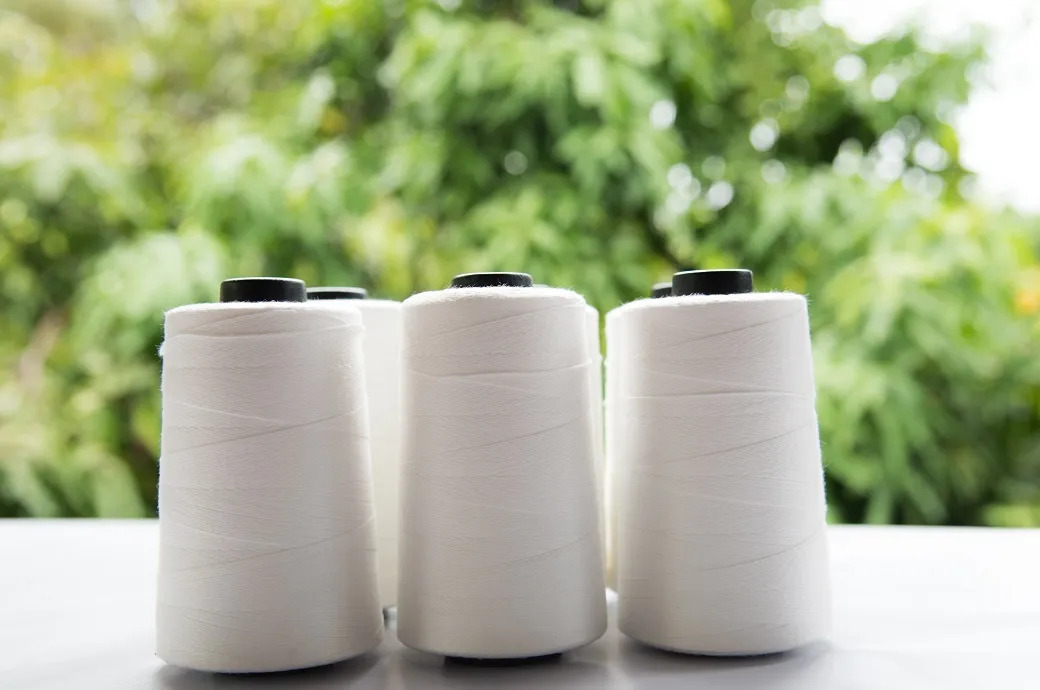
In a policy reversal that has given some relief across India’s textile ecosystem, the Ministry of Textiles has officially rescinded the Quality Control Order (QCO) on Viscose Staple Fibre (VSF) with immediate effect. Published in The Gazette of India on November 18, 2025, the order reverses the earlier mandate that required mandatory Bureau of Indian Standards (BIS) certification for all imported VSF.
The government notification was unequivocal. Acting under its statutory powers, and after consultation with BIS the Ministry stated that it “hereby rescinds the notification… dated 29th December 2022… relating to Viscose Staple Fibres with immediate effect.” This reversal marks more than just the removal of a compliance requirement. It signals a recalibration of India’s raw material policy in favour of global integration, lowered costs, and higher export competitiveness, a thread that ties directly into the nation’s Vision 2030 of achieving $100 billion in textile exports.
A policy reversal that rebalances market power
When the QCO on VSF came into effect in April 2023, it reshaped the MMF value chain in a way few anticipated. With BIS approvals delayed for most overseas suppliers, VSF imports fell sharply, effectively leaving the domestic industry dependent on a single local producer. The rescission disrupts that monopoly and opens the gates to global suppliers, reintroducing choice, competition, and supply flexibility.
Analysts view the move as part of a broader correction, coming on the heels of similar rollbacks on polyester intermediates reflecting the government’s evolving understanding that supply-side restrictions, however well-intentioned, can undermine cost competitiveness in export-led industries.
How VSF’s return to open markets alters MMF economics
Price Realignment: This is a correction long overdue. Before the rescission, domestic VSF commanded a 10-12 per cent premium over comparable grades from China, Indonesia, and Thailand. With imports now open, this price wedge will narrow quickly.
Table: Price dynamics before and after rescission
|
Metric |
Pre-rescission |
Post-rescission outlook |
What it means |
|
VSF Price Gap |
10-12% higher than imports |
Prices expected to converge toward global average |
Indian spinners gain breathing room—critical for yarn costs and export competitiveness |
|
Domestic Monopoly Pricing |
Supported by import restrictions |
Competition from multiple global suppliers |
Reduces raw material inflation and improves blending economics |
|
Impact on PSF |
VSF premium kept PSF more competitive |
Lower VSF prices will pressure PSF and P-V blends to adjust |
Entire MMF basket becomes more globally aligned |
The rescission of import restrictions marks a significant shift from a protected, high-cost domestic market to a competitive, globally aligned one.
• Cost relief: The elimination of the 10-12 per cent price premium on Viscose Staple Fibre (VSF) allows domestic prices to align with global averages, directly lowering raw material costs for Indian spinners.
• Market correction: The move effectively dismantles domestic monopoly pricing by introducing competition from international suppliers. This is expected to curb raw material inflation and make blended textiles (like Polyester-Viscose) more economically viable.
• Broader alignment: The price drop in VSF will likely force a price correction in Polyester Staple Fibre (PSF) and other substitutes to maintain competitiveness, resulting in a more efficient and globally competitive Man-Made Fibre (MMF) sector overall.
Demand revival as blends take centre stage again
Globally, MMF accounts for nearly 75 per cent of total fibre consumption, and India’s long-term growth strategy hinges on capturing a larger share of this market. VSF plays a crucial role in textile categories that demand breathability, drape, and comfort, qualities prized in womenswear, knits, home textiles, and fashion-forward products. With lower VSF prices spinners can revive dormant poly-viscose lines Mills can optimize blending ratios with cotton during volatile cotton price cycles. Exporters can re-enter markets where price competition from Bangladesh and Vietnam had grown fierce. This is particularly relevant for knitwear hubs like Tiruppur, Ludhiana, Kolkata et al and suiting clusters like Bhilwara, where VSF-based blends form the backbone of seasonal and value-added product lines.
Supply chain relief after a period of artificial constriction
One of the most significant benefits of the rollback is the restoration of an uninterrupted supply chain. During QCO enforcement imports from China, Indonesia, and Thailand were restricted; BIS approvals remained stuck in long bureaucratic cycles; import volumes crashed by 65 per cent within a year; spinners were forced to rely on a single domestic supplier and raw material inflation eroded export margins.
Table: Import and supply chain impact of the QCO
|
Metric |
Pre-rescission impact (VSF) |
Policy implication |
|
VSF Imports Decline |
Plummeted by 65% in less than a year after QCO enforcement (April 2023 onwards) |
Imports expected to surge as spinners secure raw material at competitive global rates |
|
Domestic Price Premium (VSF) |
10% - 12% over international prices |
Narrowing of the price gap, crucial for the cost structure of spinners and weavers |
|
VSF Import Sources Restricted |
Imports from key sources like China, Indonesia, and Thailand were restricted due to BIS licensing delays |
Wider access to foreign suppliers will enhance India's global competitiveness in MMF apparel |
The rescission rectifies significant supply side distortions that had previously hampered the industry. In fact, moving from a single domestic supplier to a diversified global base reduces the industry's vulnerability to domestic price shocks and supply constraints. The sharp drop in imports (65 per cent) had inflated costs, making Indian exports uncompetitive compared to rivals like Bangladesh and Vietnam. The policy reversal is expected to restore cost parity. And reinstating full access to Advance Authorization allows exporters to engage in long-term planning and pricing, which was previously difficult due to regulatory uncertainty and insufficient exemptions.
A lifeline for Indian exporters battling global rivals
Countries like Bangladesh, Vietnam, and Indonesia, India’s fiercest competitors in MMF-based apparel have long benefited from unrestricted access to low-cost VSF and polyester. The QCO-imposed cost premium acted as a penalty on Indian exporters, making it harder for them to compete in categories such as fashion knits, blended suiting, athleisure, viscose-rich womenswear and home textiles. With raw material costs now expected to normalize, India can reclaim lost competitive ground, especially in large global markets like the EU, Middle East, and the US.
What’s more, the timing is critical. Global buyers are actively diversifying sourcing away from China, and India is positioning itself as the world’s China+1 alternative. The rollback helps India enter this race with fewer handicaps.
No wonder, across associations spinners, weavers, powerloom clusters, garment exporters the reaction has been uniformly positive. The Ministry of Textiles stated that the move will “ensure seamless access to quality raw material, enhance global competitiveness, and drive industry-led growth.”
Industry bodies have labelled it as path-breaking, structural step forward and essential for India’s Vision 2030 targets. The common sentiment is that the rollback realigns India’s policy framework with market realities.
What this means for the Vision 2030 ambition
India aims to scale the textile sector from $160 billion today to $350 billion by 2030, including $100 billion in exports. To get there, two fundamentals are non-negotiable first is raw material security and second international price parity. The rescission of the VSF QCO checks both boxes as it reopens access to competitively priced global fibres and restores the momentum for MMF-based product diversification. It also strengthens India’s case as a reliable global sourcing partner while encouraging new investments in spinning, weaving, and fibre innovation. What’s most important is that manufacturing costs for MSMEs, the backbone of the textile chain also reduces with this move. And as the world shifts toward high-performance fabrics, technical textiles, and MMF-rich garments, India’s policy now aligns with the trajectory the global market is already on.
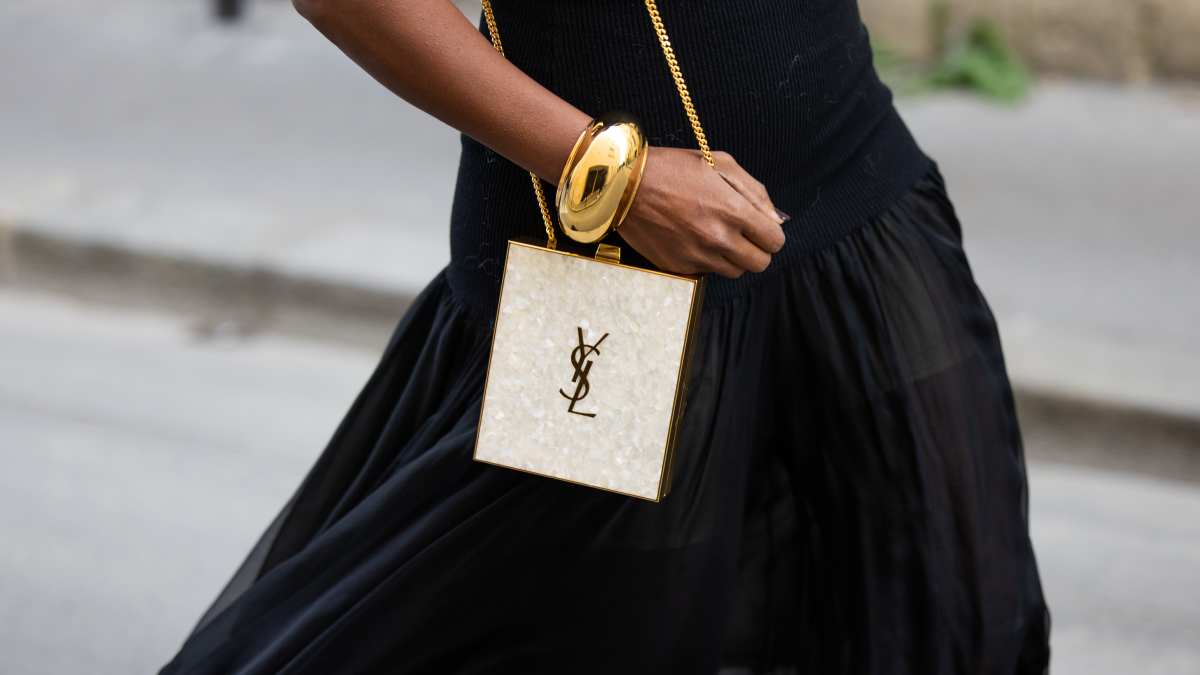
In a fashion industry often driven by noise viral micro-trends, rapid-fire drops, and overstated marketing the third quarter of 2025 delivered a surprising truth: quiet power is winning. Lyst’s Q3 Index, the global barometer of what consumers are searching, buying, and obsessing over, has crowned Saint Laurent the hottest brand in the world for the very first time.
This is not the rise of a disruptor, but the coronation of a brand that has spent years perfecting an aesthetic of restraint. As volatility rattles other luxury houses, brands anchored in clarity of purpose, those that understand who they are and who they serve are beginning to define the next era of luxury. The index’s latest results show the fashion sector settling into a new, more intentional rhythm. The brands thriving are those leaning into refined design, durability of style, and a kind of luxury that whispers rather than shouts.
A quarter of climbs, drops, and unexpected entrants
Below is the Q3 2025 top movement table, capturing the decisive swings in brand heat:
Table: Q3 2025 brand movements in the Lyst Index
|
Rank (Q3 2025) |
Brand |
Movement vs. Q2 2025 |
Key Driver/Finding |
|
1 |
Saint Laurent |
▲ 2 |
Tops the list for the first time. The Le Loafer was the quarter's second hottest product, reflecting high demand for sophisticated accessories. |
|
2 |
Miu Miu |
▼ 1 |
Still a powerhouse, but drops one spot. Continues to generate high buzz and product demand. |
|
3 |
COS |
▲ 4 |
The biggest climber in the Top 10. Saw a massive 147% increase in searches, proving the resonance of quality, understated basics across price points. |
|
4 |
The Row |
▲ 2 |
Demand up by 28% in the quarter. Their minimalist aesthetic and viral loafers solidify the continued "stealth wealth" trend. |
|
8 |
Loewe |
▼ 6 |
The biggest faller in the Top 10. Drops significantly after a strong run, despite a consistent focus on craft. |
|
13 |
Burberry |
▲ 4 |
Climbed four positions with a 14% lift in demand, showing positive signs from the brand's strategic repositioning. |
|
19 |
Stone Island |
New Entry |
Re-enters the index after four years, with a strong 115% quarter-on-quarter rise in demand, indicating a pull from casual subculture into the mainstream. |
The biggest story here is the divergence between brand clarity and brand volatility. Saint Laurent, The Row, and COS, each rooted in a distinct minimalist identity climbed. Loewe, known for boundary-pushing surrealism, dipped sharply. Meanwhile, Stone Island’s re-entry reveals that technical casualwear is cycling back into the global mainstream. The index suggests a marketplace rewarding consistency over chaos.
The rise of the quiet confidence consumer
A new kind of global luxury buyer is shaping the rankings. They are not hunting for logos or shock-value design. They want longevity, intentionality, and products that integrate seamlessly into a capsule lifestyle. Saint Laurent embodies this shift. Its ascent to No 1 wasn’t powered by spectacle, but by the Le Loafer, a product designed not to dominate a room, but to complete a wardrobe. It is minimal, sculpted, versatile, and built for repetition—not a one-season trend. Consumers are buying less, but buying better. The brands that understand this are rising.
High-street brand breakthrough
The remarkable jump by COS (from 7th to 3rd) highlights an important market dynamic: consumers are actively seeking high-quality, understated pieces at a more accessible price point. The brand's chunky cashmere sweater returned as one of Q3's hottest products, serving as an affordable gateway to the luxury aesthetic.
Table: COS's quarter at a glance
|
Metric |
Result |
|
Rank Movement |
+4 places |
|
Search Increase |
+147% |
|
Hero Product |
Chunky cashmere sweater (among hottest products globally) |
The numbers confirm COS’s role as the new gateway to luxury minimalism. At a time when shoppers are curating tighter wardrobes, its proposition sharp tailoring, clean silhouettes, premium basics feels both aspirational and attainable. This quarter, COS didn’t just rise in rank; it challenged the traditional boundaries of the luxury pyramid. Its growth shows a market where the definition of luxury is shifting from price tag to design philosophy.
An American revival
The Q3 Index also reveals a subtle but significant renaissance for American brands.
• Coach maintained its top-five strength, driven by a 29 per cent jump in demand and reinforced by sticky cultural moments around the Empire bag.
• Ralph Lauren, lifted by a resurgence of Americana aesthetics, climbed two spots to 9th spot.
• Even Madewell, outside the top 20, recorded a 34 per cent boost, reflecting a nostalgia-led discovery among Gen Z.
Together, these movements signal renewed global affection for American craftsmanship, storytelling, and classic style codes.
Interestingly, in this quarter, a single item often determined brand momentum: Saint Laurent’s Le Loafer didn’t just trend it shaped the brand’s ascent; COS’s cashmere sweater increased discovery at the high-street level; Skims, now at No 15, continues its meteoric path with product-led growth demand is up 271 per cent year-on-year, powered by category dominance in shapewear and solution-driven apparel. The index makes one thing clear: when the product is right, the consumer response is exponential.
COS's climb to the top three
COS (Collection of Style) moved up four 4 places to No 3 a 147 per cent increase in searches The success of COS is a clear case study in how quality basics and a consistent aesthetic can compete with traditional luxury houses. Positioning itself as a source for affordable luxury and a cornerstone for a versatile capsule wardrobe, the brand captured consumer attention who are "shopping with precision," balancing investment pieces with high-quality, accessible staples. Their strong search volume increase and the presence of their cashmere sweater on the hottest products list demonstrate a successful strategy of providing a modern, restrained aesthetic that aligns perfectly with the current preference for understated style.
The Lyst Index result is a uniquely dynamic snapshot of global fashion desire. Q3 2025 reflects a world in transition: away from maximalism, away from trend churn, toward a fashion economy shaped by deliberate choices. Thus this quarter marks an inflection point. Saint Laurent’s victory is symbolic not of dominance, but of discipline. Quiet luxury isn’t just a trend; it is becoming the backbone of modern fashion consumption. Brands that anchor themselves in clarity, craftsmanship, and consistency whether luxurious or accessible are reshaping the hierarchy of desirability.
In shor, the Lyst Index doesn’t simply show who’s winning. It shows why. And in Q3 2025, the winners were the brands that chose timelessness over noise
Spanish apparel brand Silbon has officially opened its inaugural U.S. store in Miami's Aventura Mall, using the high-profile location as a critical beachhead for an aggressive global growth trajectory. Historically focused on classic, medium-to-high segment menswear since its 2009 founding, the Córdoba-based firm is now strategically shifting toward its high-growth Woman and Kids lines, which are prominently featured in the new Miami store. This retail push is foundational to the company's financial outlook, with the plan targeting €94 million in turnover by 2025, projecting sales growth of over 44% from 2023’s €65 million.
Digital strategy and €180mn ambition
The U.S. entry, located near major competitors, is described by CEO Pablo López as "the biggest challenge we have faced." This high-stakes debut is part of a new strategic plan aiming for €180 million in sales by 2028. The strategy is underpinned by four core pillars: shifting capital expenditure toward digital channel investment for international markets, maturation of existing points-of-sale, scaling the Women’s line (which currently reports 60% annual growth), and multi-brand expansion. To appeal to conscious consumers, Silbon also highlights ethical commitments, including its "Second Life" circular economy program and the "Silbon Forest" reforestation initiative.
YKK Corporation, the world’s largest zipper and fastening manufacturer, has fundamentally restructured its global business strategy around an ambitious, science-backed Net-Zero commitment, marking a significant shift from incremental sustainability goals to full business transformation.
In its latest Integrated Report, the company confirmed its Net-Zero 2050 goal has been officially validated by the Science-Based Targets initiative (SBTi), requiring a 90% reduction in all Scope 1, 2, and 3 emissions by 2050.
YKK demonstrated immediate progress, announcing it has already cut Scope 1 and 2 emissions by 57% from its 2018 baseline. This achievement was largely driven by rapidly boosting renewable energy to 61.2% of its total consumption, with 45 global sites, including the entire China region, now running on 100% renewable power.
The new "ONE YKK Vision" emphasizes deep supply chain action and circularity. The company increased its use of sustainable materials to 48% and is driving innovation with new products like NATULON Plus and Revived Renewal Components, designed for easier garment-to-garment recycling and repair.
"Sustainability is not a slogan—it’s a strategy,” said Koichi Matsushima, President, YKK Corporation. “With our Net-Zero commitment... we are taking bold steps to transform our business, empower our people, and lead the way toward a circular economy.” The plan underscores the company's commitment to climate, material resource efficiency, and chemical safety across its entire value chain.
The global fashion and apparel industry is set for another "challenging" year, with a projected continuation of low single-digit growth in 2026. This sluggish financial outlook, attributed to persistent macroeconomic volatility and heightened consumer caution, is compelling apparel brands to radically redefine their operating models.
Consumer caution drives value shift
McKinsey & Company analysis indicates that global industry growth will remain constrained, underpinned by exceptionally low consumer sentiment, particularly in the United States, where figures hit lows not seen since May 2020. This caution translates into a fierce consumer shift toward value: over 60% of global shoppers are actively seeking ways to reduce fashion expenses, driving significant growth in the secondhand market. The apparel sector’s response is the "Elevation Game," where mid-market brands are investing in product quality and experience to capture shoppers squeezed out of aspirational luxury segments.
Efficiency unlocked by automation
To counter the growth stagnation and manage rising operational costs, such as the projected 9% increase in clothing prices due to tariffs and supply chain reconfiguration,companies are prioritizing operational efficiency. Artificial Intelligence (AI) is moving from an optional tool to a business necessity for cost control. Generative AI is being deployed across functions like content creation and customer service to drive productivity gains, freeing up resources for innovation. This push for efficiency, rather than pure expansion, is the central plank of the industry’s strategy to navigate the slow-growth environment and emerge as "agile winners."
The State of Fashion 2026 report is an annual strategic analysis produced by McKinsey & Company and The Business of Fashion (BoF), setting the agenda for industry leaders by tracking economic performance, growth sectors , and emerging technological and regulatory shifts.

